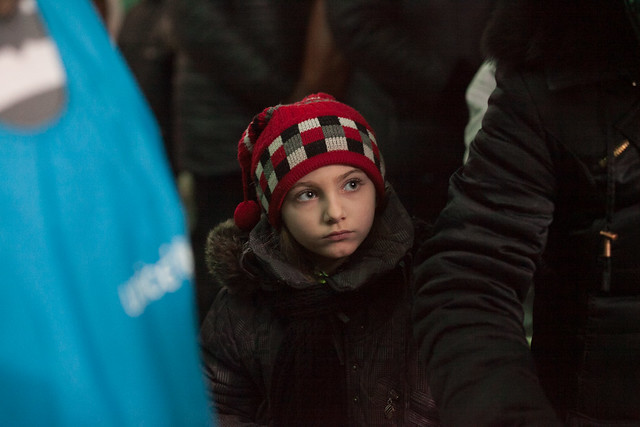8 Facts About Education in Ukraine

Due to the country’s poor economic stability and growth and frequent changes in power, education in Ukraine has been unsustainable and inadequate. In 2017, a new law on education was signed, aiming to improve the educational system in Ukraine. Below are 8 facts about education in Ukraine, and how the government is trying to improve its educational system.
- Ukraine has one of the highest rates of national spending on education in the world, with 6 percent of gross domestic product (GDP) being devoted to education funding. Despite this large quantity of funds, education financing decreased by 1.2 percent from 2013 to 2017. The 2017 Law of Ukraine on Education commits the country to devote at least 7 percent of GDP on education. This is in an effort to remedy the problems of inadequate facilities and insufficient teacher salaries.
- A section of the new Law of Ukraine on Education is sparking major international controversy. The law, which will gradually develop between 2018 and 2020, states that all secondary education will be taught in Ukrainian. The debate about the country’s accordance with the standards of the European Union is in relation to the treatment and accommodation of minorities throughout the country. Hundreds of thousands of Romanians, Moldavians, Hungarians, and Russians live in Ukraine. These citizens and the leaders of their countries of origin feel as though this language law marginalizes minority groups. Response to the law by foreign officials was swift and explicit. For example, Hungarian Foreign Minister Péter Szijjártó has been expressing that Hungary would not support Ukraine’s initiative of European Union integration. To date, it is unclear whether this portion of the law will be executed or not.
- Despite the language controversy, the new education law demonstrates positive forward motion and the Ukrainian government’s understanding of the existing inadequacies. The law put into effect by Ukrainian president Petro Poroshenko on September 25, 2017, provides funding for better materials and technologies in classrooms. Education disparities were most prominent in rural schools still using older technology and teaching methods. As a whole, the movement sways away from the previous structures of education in Ukraine. Then, the focus was on uniformity and rote memorization of impractical facts. Now, the law calls for a greater focus on the student as an individual and their applicable skills.
- One of the focuses of this new education reform is on primary education. In fact, observation of 100 schools nationwide will serve as experiments of the new system. The new primary school system introduces children to courses that foster critical thinking and analysis. Classrooms will now have accommodations so that children may learn while sitting or lying on the floor. Additionally, new building toys such as Legos will be available, which help to develop fine motor skills. Finally, this type of education mandates a smaller class size and greater teacher salary.
- Ukraine has the smallest class sizes in the world, but this ratio is due to the number of students decreasing at a higher rate than the number of teachers. However, communities are hesitant to close schools. Additionally, as of 2016, funding for schools came from the regions, while the community was maintaining management and maintenance. Furthermore, schools with low enrollment are continually receiving funding because the surrounding community is providing support. Overall, the average class size is nine students despite these efforts.
- More Ukrainian students are choosing to attend universities abroad than ever before. In 2016, 176 percent more students studied abroad than in 2006, with over 60,000 Ukrainian students enrolled in abroad programs. Students who make the decision to leave Ukraine for their collegiate education are seeking to make themselves more marketable to employers internationally and to escape the poor economy of Ukraine.
- The Ukrainian education system is switching from an 11-year program to a 12-year program. This includes four years of elementary education, five years of basic education, and three years of branch education. The final three years will serve as either academic or vocational training. This will prepare students to study an area of interest at a higher level or to enter the workforce. This change is also in an effort for education in Ukraine to align itself with European standards.
- An important highlight of the country’s new education law is its focus on inclusive education, a facet of education never before adopted in Ukraine. The new law allows for teacher specialists to work with children with physical and mental disabilities. This further allows them to integrate into special programming in ordinary schools.
These 8 facts about education in Ukraine highlight the country’s hopes of improvement for its school system through the implementation of Law of Ukraine for Education. If the spirit of these goals is successful, Ukraine will continue to advance the inclusion and quality of its schools, overall improving the education of all students.
– Gina Beviglia
Photo: Flickr
